这篇文章主要介绍了Python如何实现网络自动化eNSP,具有一定借鉴价值,感兴趣的朋友可以参考下,希望大家阅读完这篇文章之后大有收获,下面让小编带着大家一起了解一下。
云彩桥接到本机环回接口:192.168.1.1/24
三层交换机IP:192.168.1.2/24
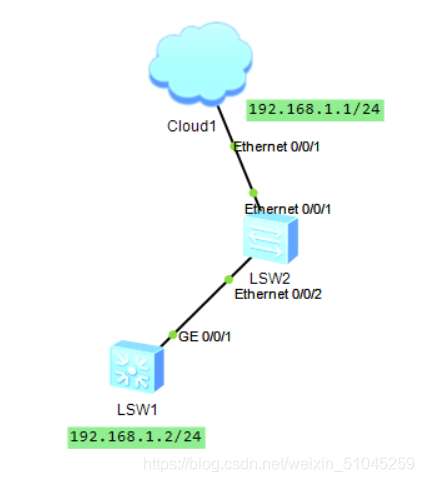
使用Python Paramiko 模块实现SSH 登录单个交换机(192.168.56.2/24),配置LoopBack0地址:1.1.1.1/32。配置完成后,保存退出。
实验步骤 配置交换机管理地址,并测试与主机虚拟网卡连通性
[Huawei]vlan 10 [Huawei]int vlan 10 [Huawei-Vlanif10]ip add 192.168.1.2 24 [Huawei-GigabitEthernet0/0/1]port link-type access [Huawei-GigabitEthernet0/0/1]port default vlan 10
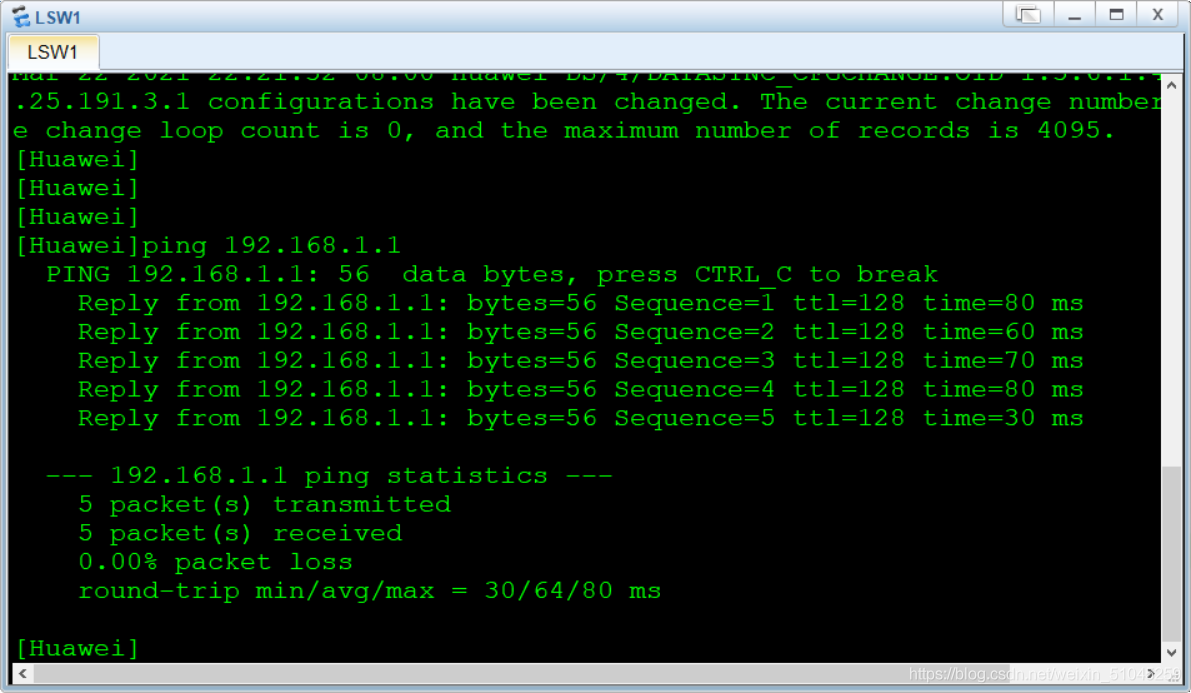
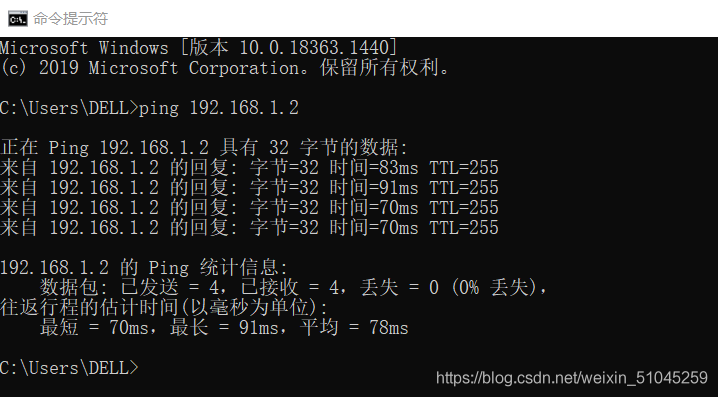
配置三层交换机开启 SSH 服务端,配置 SSH 账号密码。
[Huawei]user-interface vty 0 4 [Huawei-ui-vty0-4]authentication-mode aaa [Huawei-ui-vty0-4]protocol inbound ssh [Huawei-aaa]local-user python password cipher 123 [Huawei-aaa]local-user python privilege level 3 [Huawei-aaa]local-user python service-type ssh [Huawei]stelnet server enable [Huawei]ssh authentication-type default password
Python代码
import paramiko
import time
ip = '192.168.56.2'
username = 'python'
password = '123'
ssh_client = paramiko.SSHClient()
ssh_client.set_missing_host_key_policy(paramiko.AutoAddPolicy()) //默认情况下,Paramiko会拒绝任何未知的SSH public keys,使用此函数使其接收来自交换机提供的public keys。
ssh_client.connect(hostname=ip, username=username, password=password, look_for_keys=False)
print('Successfully connect to ' + ip)
commend = ssh_client.invoke_shell()
commend.send('sys\n')
commend.send('interface LoopBack 0\n')
commend.send('ip add 1.1.1.1 255.255.255.255\n')
commend.send('return\n')
commend.send('save\n')
commend.send('y\n')
time.sleep(3) //稍等3秒,然后执行以下操作
output = commend.recv(65535) //截取本次运行script后的所有输出记录,将其assign给output变量
print(output.decode("ascii"))
ssh_client.close()查看运行结果
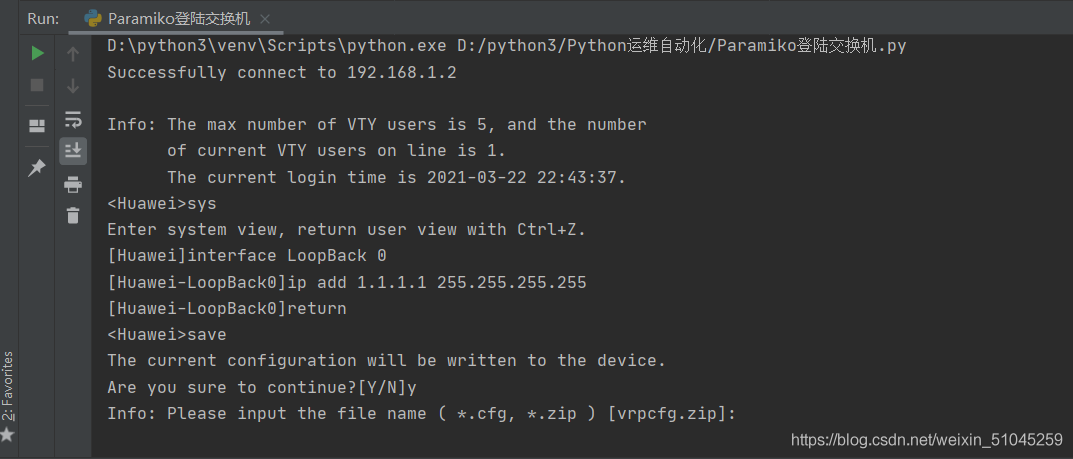
在交换机上查看
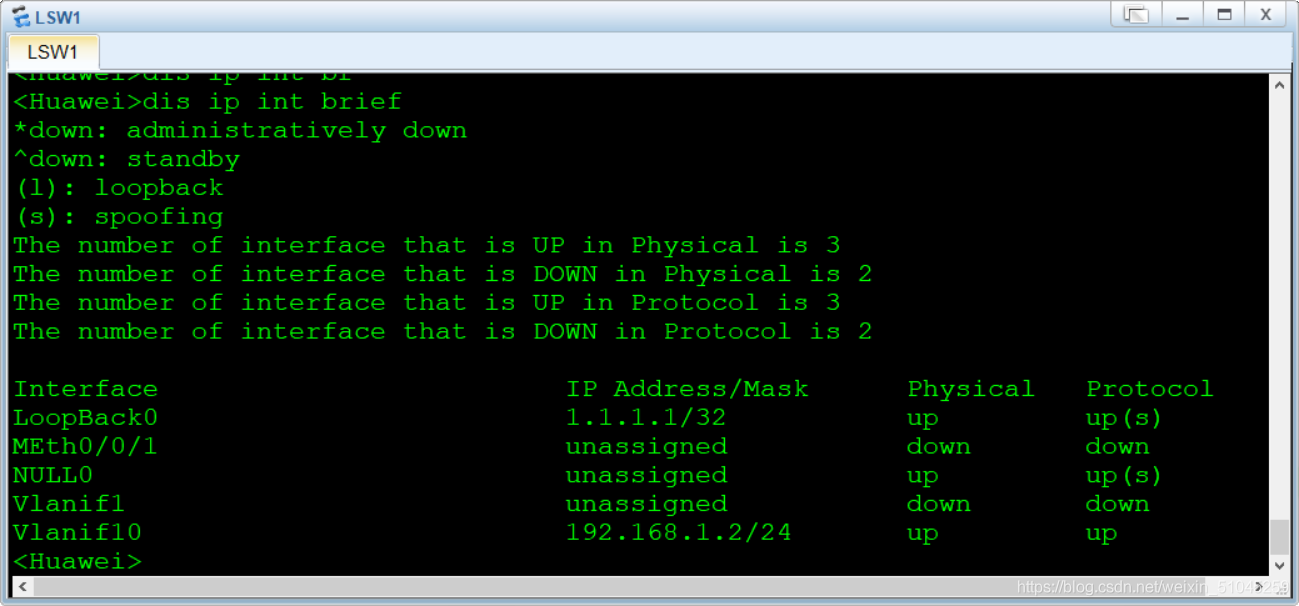
也可以在交换机上debuggiing ip packet可以看到日志
连续子网三层交换机:管理地址 192.168.1.2/24 to 192.168.1.5/24
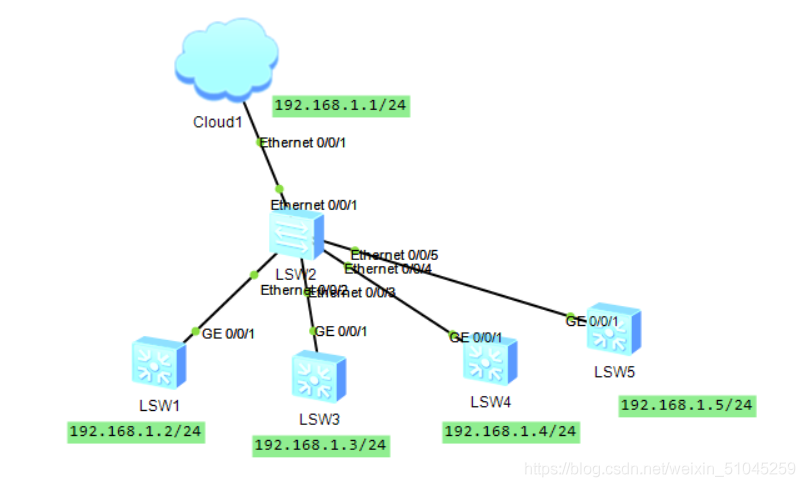
登陆到各台交换机,并为其配置vlan 11 to 15,保存配置并退出。
配置管理口IP地址,并配置SSH Server 登陆名以及密码等
python代码
import paramiko
import time
#import getpass
#username = input('Username: ')
#password = getpass.getpass('Password: ') //pycharm中该模块运行没反应,用户名和密码还是直接写的
username = 'python'
password = '123'
for i in range(2, 6):
ip = '192.168.1.' + str(i)
ssh_client = paramiko.SSHClient()
ssh_client.set_missing_host_key_policy(paramiko.AutoAddPolicy())
ssh_client.connect(hostname=ip, username=username, password=password, look_for_keys=False)
command = ssh_client.invoke_shell()
print('Successfully connect to ' + ip)
command.send('sys\n')
for j in range(11, 16):
print('正在创建VLAN: ' + str(j))
command.send('vlan ' + str(j) + '\n')
time.sleep(1)
command.send('return\n')
command.send('save\n')
command.send('y\n')
time.sleep(2)
output = command.recv(65535).decode('ascii')
print(output)
ssh_client.close()运行结果
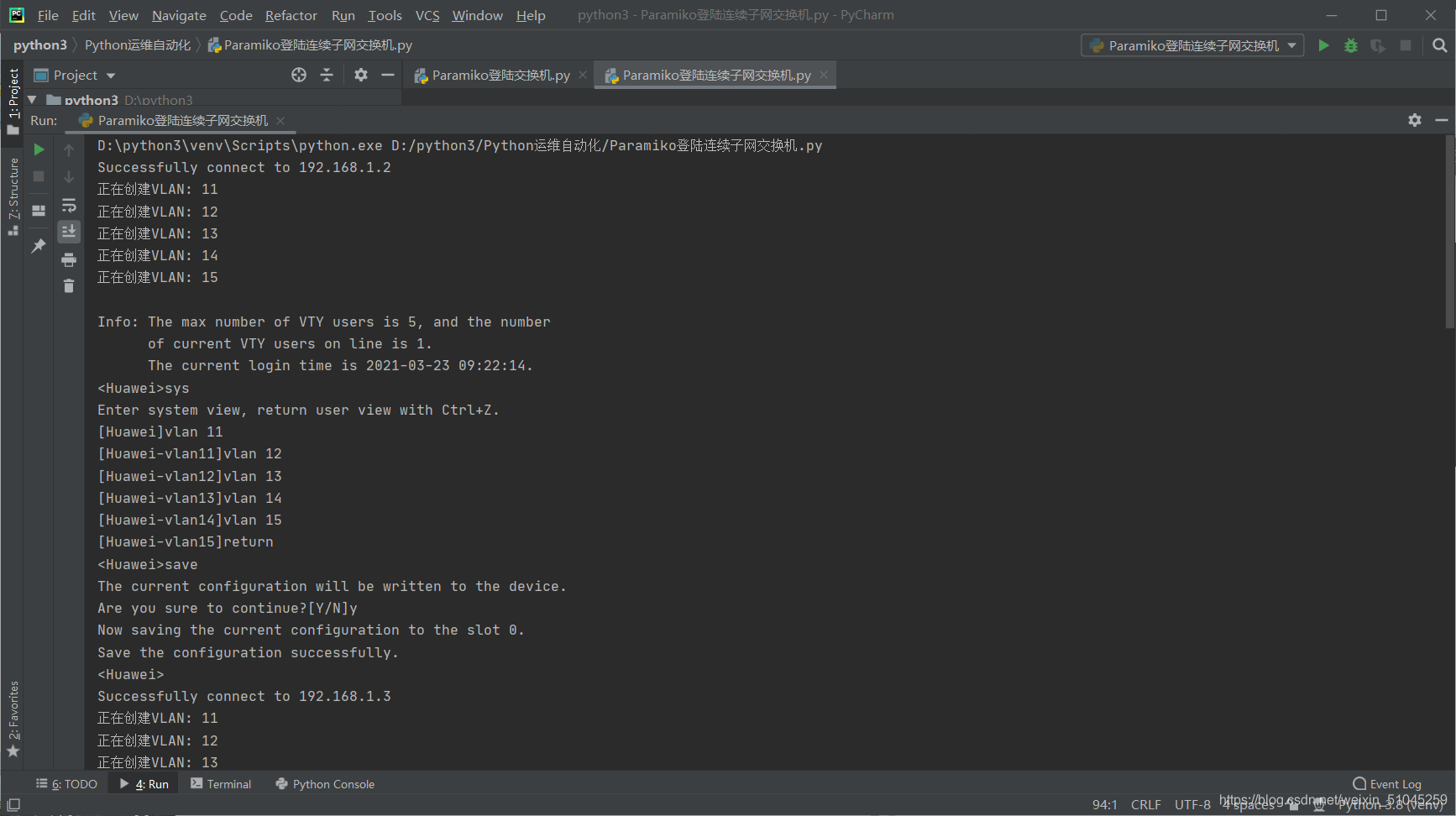
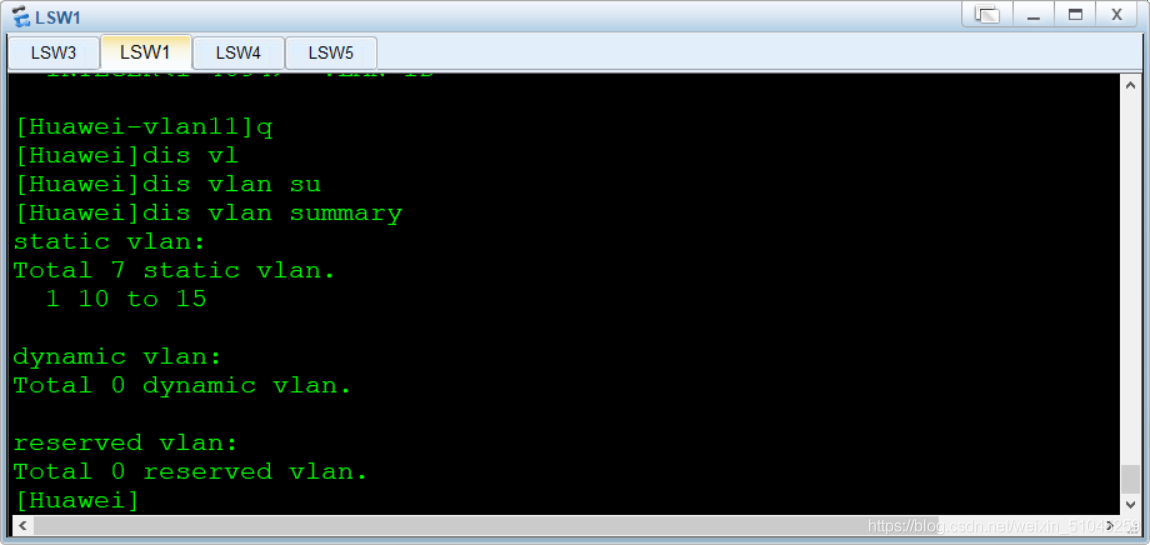
将交换机LSW5的管理接口ip更改为192.168.1.6/24,使交换机ip不在同一网段
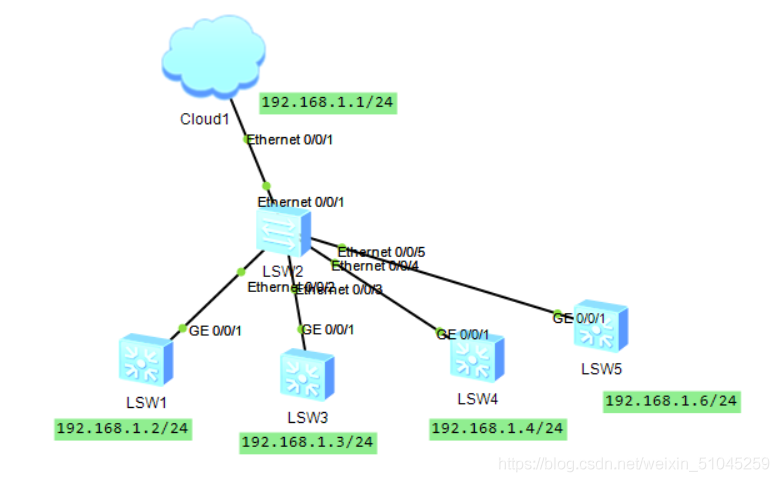
使用Paramiko登陆四台ip不连续的交换机,并给其配置vlan11 to 15
实验步骤
创建一个文本文档,将需要配置的交换机的ip地址写入,这里我在Desktop下创建了一个名为ip.txt文档

使用open函数,打开文件,进行操作,实现不连续子网调用
import paramiko
import time
username = 'python'
password = '123'
f = open('C:/Users/DELL/Desktop/ip.txt', 'r')
for line in f.readlines():
ip = line.strip()
ssh_client = paramiko.SSHClient()
ssh_client.set_missing_host_key_policy(paramiko.AutoAddPolicy())
ssh_client.connect(hostname=ip, username=username, password=password)
print('Successfully connect to ', ip)
command = ssh_client.invoke_shell()
command.send('sys\n')
command.send('vlan batch 11 to 15\n')
time.sleep(2)
command.send('return\n')
command.send('save\n')
command.send('y\n')
time.sleep(2)
output = command.recv(65535).decode('ascii')
print(output)
f.close()
ssh_client.close()查看运行结果
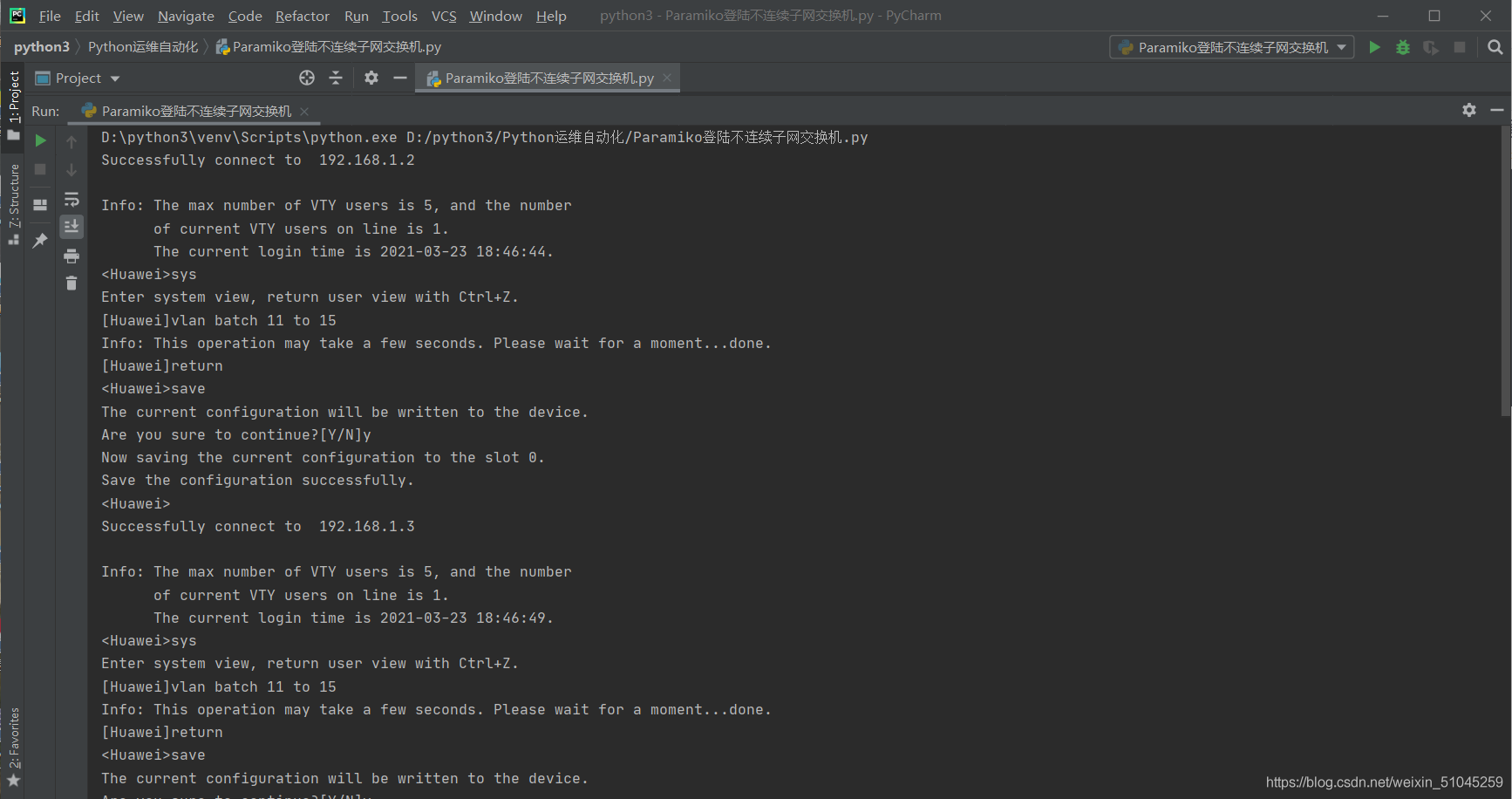
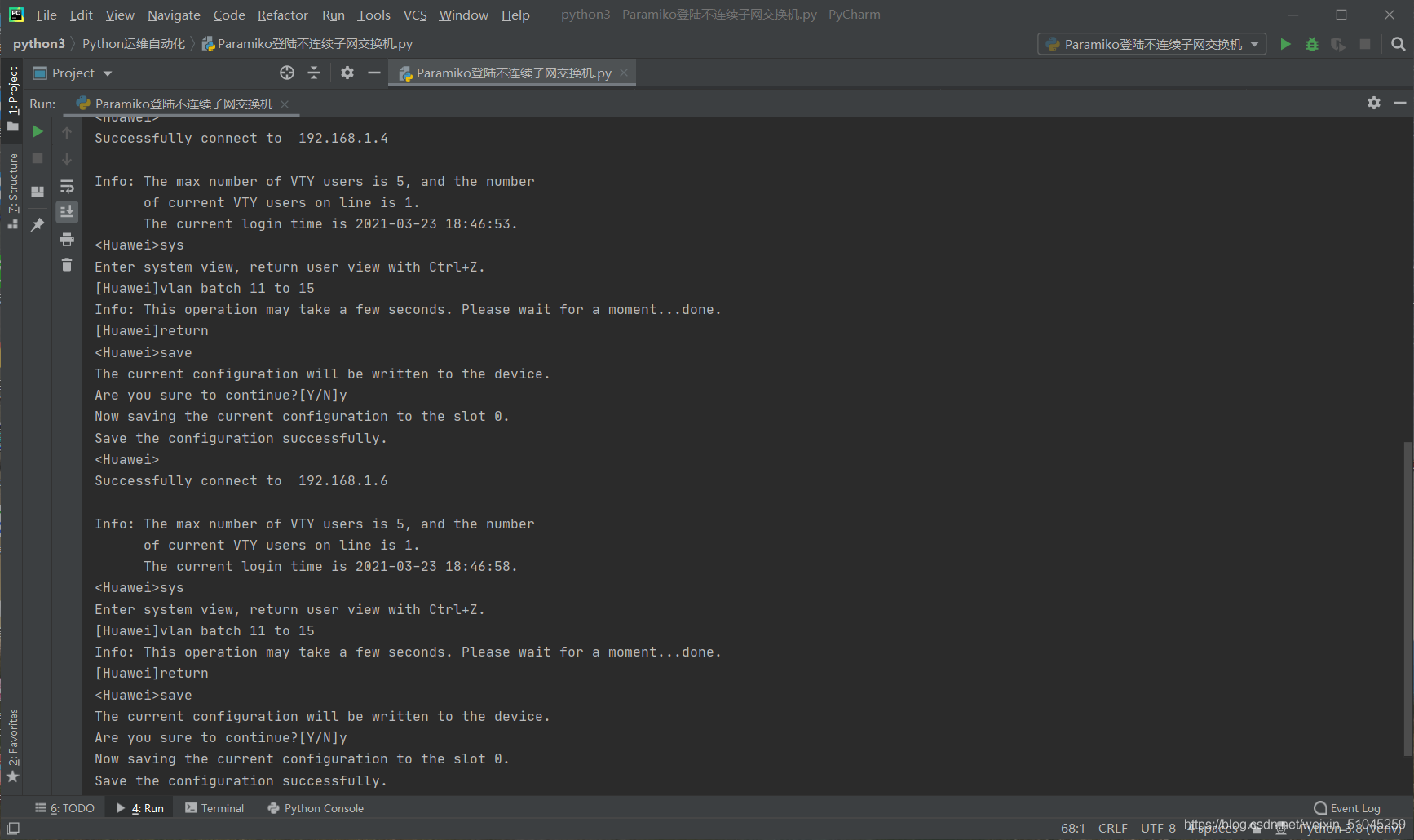
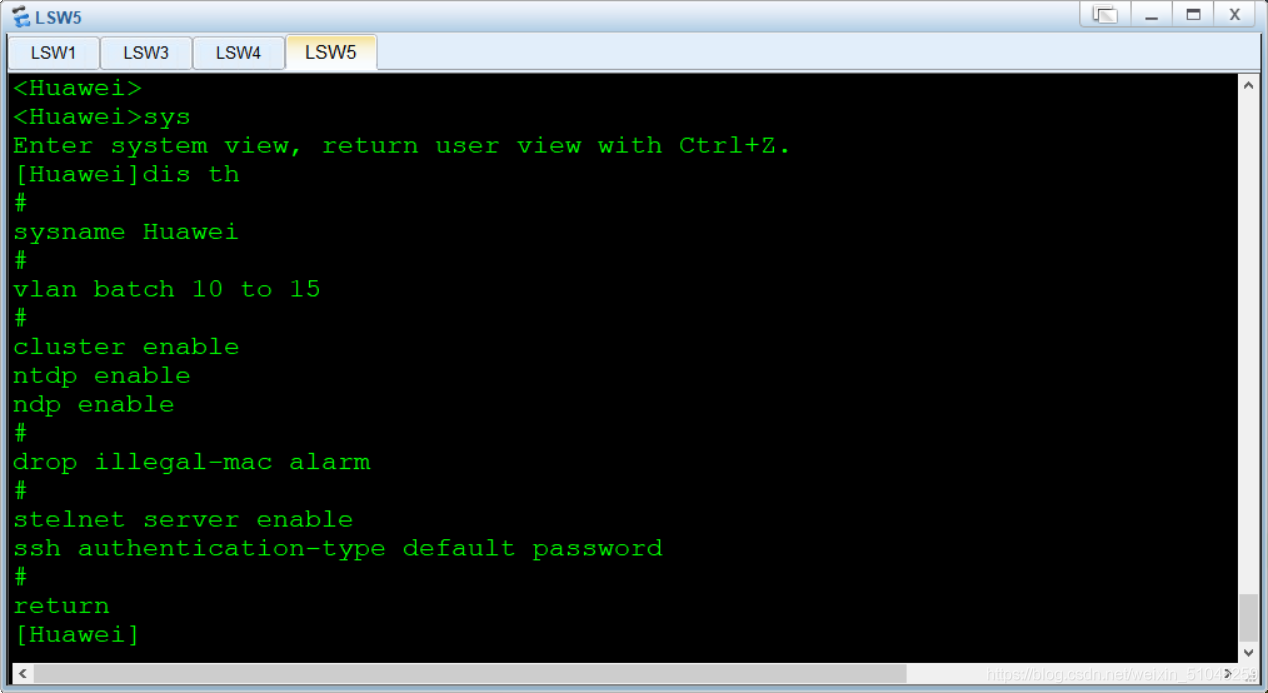
假设1.2和1.3为一组,1.4和1.6为一组
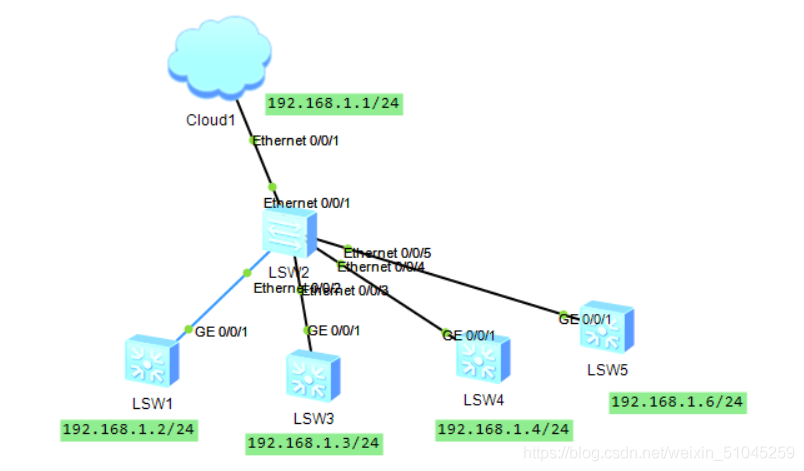
同时修改不同型号设备的配置,给SW1/3配置vlan11 to 15,SW4/5配置vlan16 to 20
创建两个名为ip1.txt,command1.txt的文件,存储1组的ip和要进行的配置

同样创建两个名为ip2.txt,command2.txt文件,存储2组的ip和要进行的配置


python代码
import paramiko
import time
import sys
username = 'python'
password = '123'
ip_file = sys.argv[1]
cmd_file = sys.argv[2]
iplist = open(ip_file)
for line in iplist.readlines():
ip = line.strip()
ssh_client = paramiko.SSHClient()
ssh_client.set_missing_host_key_policy(paramiko.AutoAddPolicy())
ssh_client.connect(hostname=ip, username=username, password=password)
print('Successfully connect to ', ip)
command = ssh_client.invoke_shell()
cmdlist = open(cmd_file, 'r')
cmdlist.seek(0)
for line in cmdlist.readlines():
command.send(line + '\n')
time.sleep(5)
cmdlist.close()
output = command.recv(65535)
print(output)
iplist.close()
ssh_client.close()查看运行结果(pycharm不可以使用argv,在cmd里使用)

5.SSH连接失败处理
import paramiko
import time
import sys
import socket
import getpass
username = input('Username: ')
password = getpass.getpass('Password: ')
ip_file = sys.argv[1]
cmd_file = sys.argv[2]
switch_with_authentication_issue = []
switch_not_reachable = []
iplist = open(ip_file, 'r')
for line in iplist.readlines():
try:
ip = line.strip()
ssh_client = paramiko.SSHClient()
ssh_client.set_missing_host_key_policy(paramiko.AutoAddPolicy())
ssh_client.connect(hostname=ip, username=username, password=password,look_for_keys=False)
print('Successfully connect to ' + ip)
command = ssh_client.invoke_shell()
cmdlist = open(cmd_file, 'r')
cmdlist.seek(0)
for cmd in cmdlist.readlines():
command.send(cmd + '\n')
time.sleep(1)
cmdlist.close()
output = command.recv(65535)
print(output.decode("ascii"))
except paramiko.ssh_exception.AuthenticationException:
print('User authentication failed for ' + ip + '.')
switch_with_authentication_issue.append(ip)
except TimeoutError:
switch_not_reachable.append(ip)
iplist.close()
ssh_client.close()
print('\nUser authentication failed for below switches: ')
for i in switch_with_authentication_issue:
print(i)
print('\nBelow switchs are not reachable: ')
for i in switch_not_reachable:
print(i)感谢你能够认真阅读完这篇文章,希望小编分享的“Python如何实现网络自动化eNSP”这篇文章对大家有帮助,同时也希望大家多多支持亿速云,关注亿速云行业资讯频道,更多相关知识等着你来学习!
免责声明:本站发布的内容(图片、视频和文字)以原创、转载和分享为主,文章观点不代表本网站立场,如果涉及侵权请联系站长邮箱:is@yisu.com进行举报,并提供相关证据,一经查实,将立刻删除涉嫌侵权内容。